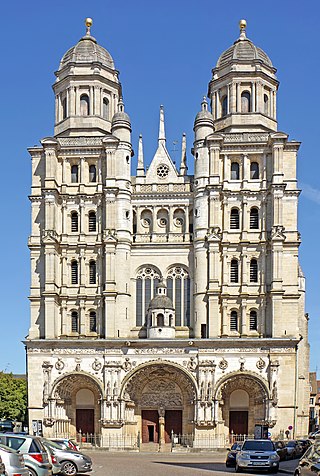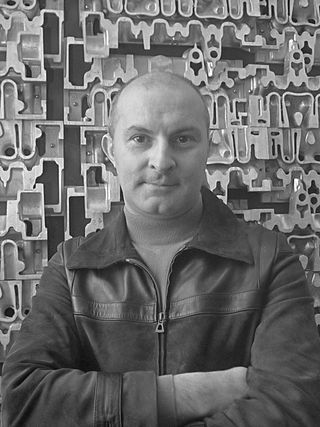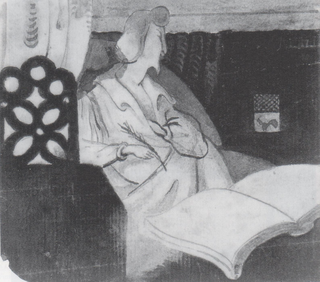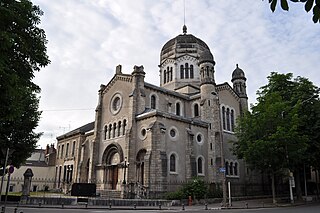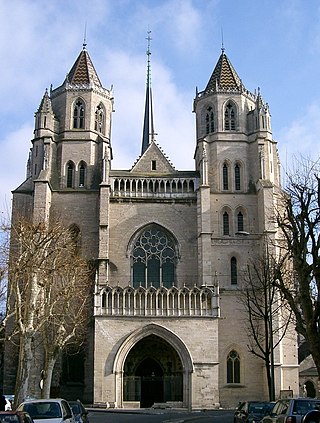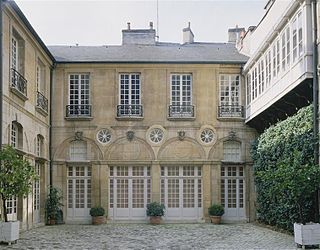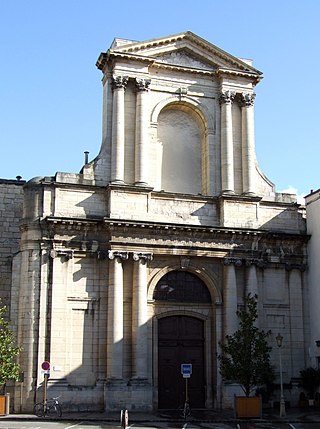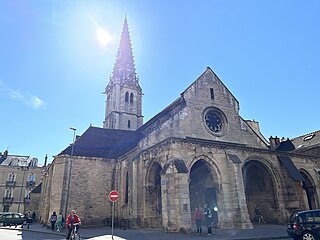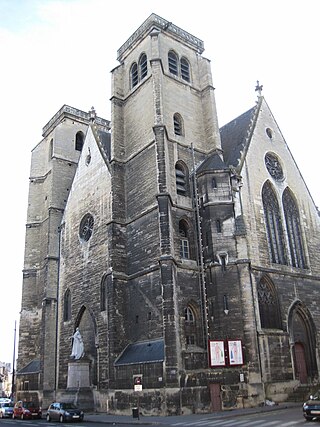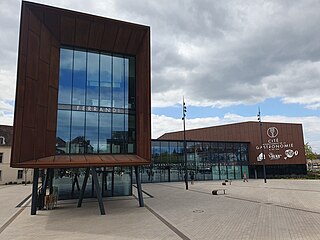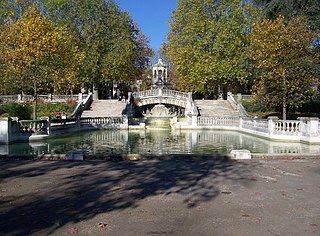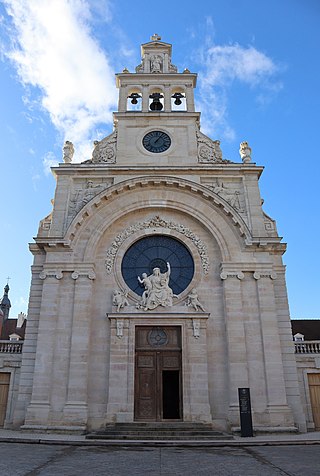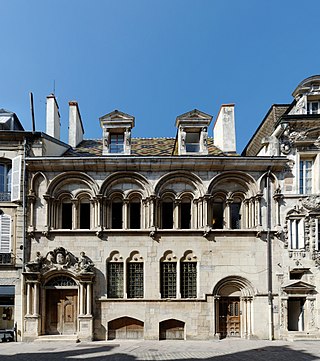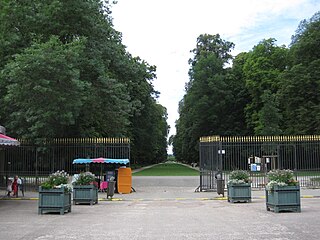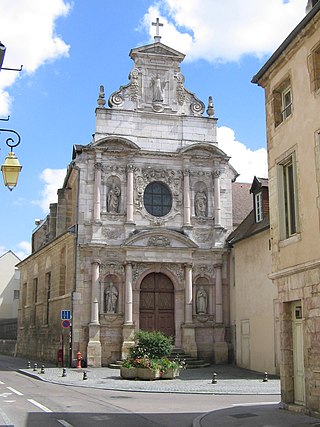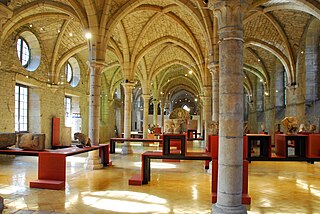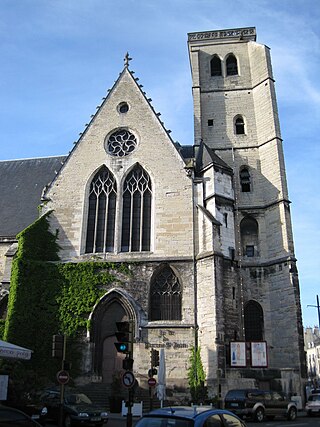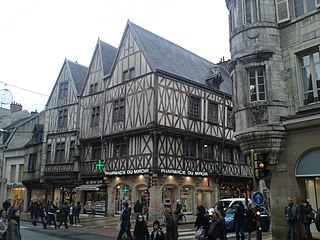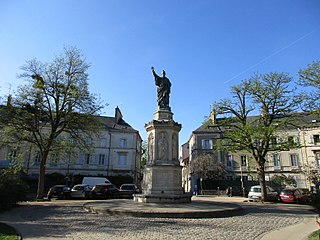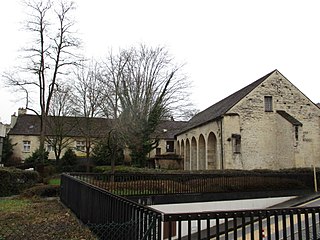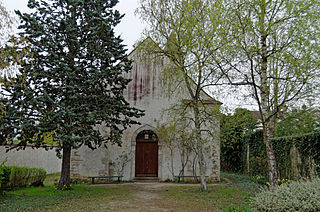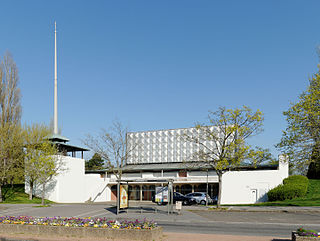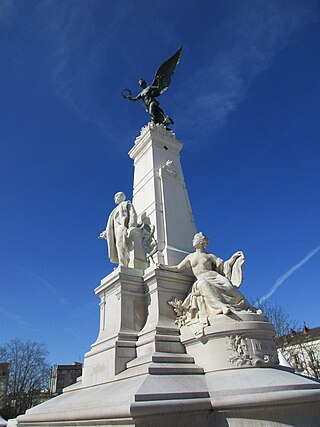31 Sights in Dijon, France (with Map and Images)
Legend
Welcome to your journey through the most beautiful sights in Dijon, France! Whether you want to discover the city's historical treasures or experience its modern highlights, you'll find everything your heart desires here. Be inspired by our selection and plan your unforgettable adventure in Dijon. Dive into the diversity of this fascinating city and discover everything it has to offer.
Sightseeing Tours in DijonActivities in DijonThe Church of Notre-Dame of Dijon is a Roman Catholic church in Dijon. Considered a masterpiece of 13th-century Gothic architecture, it is situated at the heart of the preserved old centre of the city. It is located in Place Notre-Dame, near the Palace of the Dukes of Burgundy and opposite the rue Musette.
2. Église Saint-Michel
The Saint-Michel church, located in the protected area of Dijon, is a sixteenth-century church famous for its Renaissance façade, considered one of the most beautiful in France. It is classified as a historical monument by the list of 1840.
3. Divionis Mechanica Fossilia Arman
Arman was a French-born American artist. Born Armand Fernandez in Nice, France, Arman was a painter who moved from using objects for the ink or paint traces they leave to using them as the artworks themselves. He is best known for his Accumulations and destruction/recomposition of objects.
4. Lycée général et technologique Carnot
The Lycée Carnot is a local public educational institution located in Dijon, inaugurated on July 31, 1893. It is the oldest high school in Dijon, created in 1802 as an Imperial High School, on the premises of the current location of the Marcelle-Pardé college and the most important high school for preparatory classes for the grandes écoles of the Dijon academy.
5. Anti-Robot
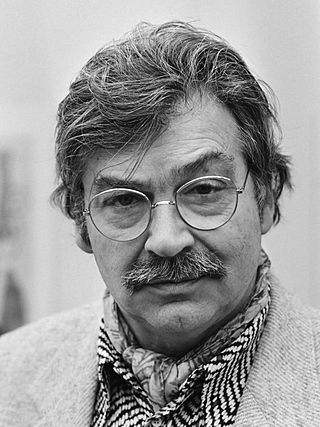
Christiaan Karel Appel was a Dutch painter, sculptor, and poet. He started painting at the age of fourteen and studied at the Rijksakademie in Amsterdam in the 1940s. He was one of the founders of the avant-garde movement CoBrA in 1948. He was also an avid sculptor and has had works featured in MoMA and other museums worldwide.
6. Aloysius Bertrand
Louis Jacques Napoléon Bertrand, better known by his pen name Aloysius Bertrand, was a French Romantic poet, playwright and journalist. He is famous for having introduced prose poetry in French literature, and is considered a forerunner of the Symbolist movement. His masterpiece is the collection of prose poems Gaspard de la Nuit published posthumously in 1842; three of its poems were adapted to an eponymous piano suite by Maurice Ravel in 1908.
7. Synagogue de Dijon
The Synagogue of Dijon is a synagogue located in Dijon in the French department of Côte-d'Or. It is listed in its entirety in the Supplementary Inventory of Historic Monuments by prefectural decree of 15 March 1989.
8. Improvisations Tellem
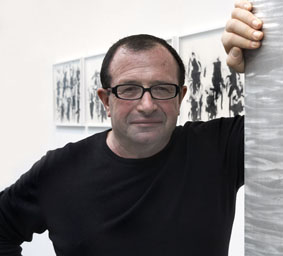
Alain Kirili was a French-American sculptor. He was recognized for his post-minimalist abstract sculptures in forged iron and his large-scale public sculptures. His work has been the subject of numerous gallery and museum exhibitions in United States and Europe, and has received considerable critical interest from art historians, such as Thierry Dufrêne, Robert C. Morgan, Robert Rosenblum, and Kirk Varnedoe. Kirili lived and worked in Paris and New York.
9. Liquid Knowledge
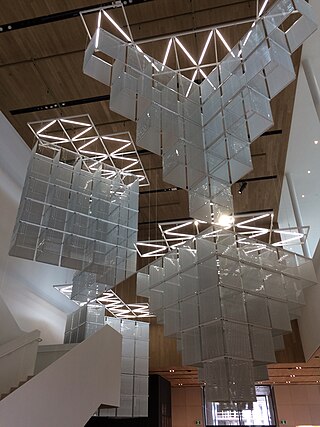
Haegue Yang is a South Korean artist primarily working in sculpture and installation. After receiving her B.F.A from Seoul National University in 1994, Yang received an M.A. from Städelschule where she now teaches as a professor of Fine Arts. She currently lives and works in Berlin and Seoul.
10. Cathédrale Saint-Bénigne
Dijon Cathedral, or the Cathedral of Saint Benignus of Dijon, is a Roman Catholic church located in the town of Dijon, Burgundy, France, and dedicated to Saint Benignus of Dijon. The Gothic cathedral building, constructed between 1280 and 1325, and dedicated on 9 April 1393, is a listed national monument.
11. Musée Magnin
The Musée Magnin is a national museum in the French city of Dijon in Burgundy, in the Côte-d'Or department, with a collection of around 2,000 works of art collected by Maurice Magnin and his sister Jeanne and bequeathed to the state in 1938, along with the hôtel Lantin, a 17th-century hôtel particulier in the old-town quarter of Dijon where it is now displayed as an amateur collector's cabinet of curiosities and as the Magnin family home.
12. Ancienne Église Saint-Etienne
The Church of Saint-Étienne is a former disused Catholic church located in the remarkable heritage site of Dijon. It now houses the Rude Museum and the municipal library of Dijon Centre-ville la Nef since the move in 2007 of the Dijon Chamber of Commerce and Industry, as well as cultural services including the documentation centre of the Museum of Fine Arts. The church dates from the fifteenth century and was restored in the seventeenth century. Its current Jesuit-style façade dates from the eighteenth century.
13. Ancienne Église Saint-Philibert
The Church of Saint-Philibert is a disused church in Dijon located on rue Michelet, near the cathedral of Saint-Bénigne. Built in the twelfth century, Saint-Philibert is the only Romanesque religious building in Dijon, with the exception of its porch, its north chapels, and its Gothic-style stone bell tower which dates from the early sixteenth century.
14. Musée de la vie bourguignonne Perrin de Puycousin
The Perrin de Puycousin Museum of Burgundian Life is a "Burgundian ethnological museum" housed in the Bernardine monastery of Dijon in Côte-d'Or and associated with the Dijon Museum of Sacred Art of the Sainte-Anne church in Dijon.
Wikipedia: Musée de la vie bourguignonne Perrin de Puycousin (FR), Website
15. Ancienne Église Saint-Jean
The Church of Saint-Jean de Dijon is a disused Catholic church in the flamboyant Gothic style of the fourteenth and fifteenth centuries, located in Dijon in Côte-d'Or in Burgundy-Franche-Comté and dedicated to John the Apostle. It has been classified as a historical monument since 1862 and has been home to the Dijon-Bourgogne Theatre since 1974.
16. Cité Internationale de la Gastronomie et du Vin
The International City of Gastronomy and Wine (CIGV) of Dijon is one of the cities of gastronomy, located on the site of the former general hospital of Dijon. Its mission is to promote both the gastronomic meal of the French and the "climats" of the Burgundy vineyards, both of which are listed as UNESCO World Heritage Sites. The complex was inaugurated on May 6, 2022.
Wikipedia: Cité internationale de la gastronomie et du vin (FR), Website
17. Darcy Square
The Darcy Garden or Square Darcy is a nineteenth-century neo-Renaissance public garden on Place Darcy, in the city center of Dijon in the Côte-d'Or. It is dedicated to the hydraulic engineer Henry Darcy (1803-1858) and has been listed as a historical monument since 2015.
18. Chapelle des Climats
The Grande Chapelle is located in the former Dijon General Hospital. Built from the sixteenth century as the hospital's sick room, it was remodelled several times to become a chapel from 1843 to 2015, the date of its execration. It now serves as an exhibition room within the Cité internationale de la Gastronomie et du Vin. Its façade and interior are classified as historical monuments.
Wikipedia: Grande Chapelle de l'hôpital général de Dijon (FR)
19. Hôtel Aubriot
The Hôtel Aubriot is a thirteenth-century mansion with a Burgundy glazed tile roof, adjoining the Maison Maillard, at 40, rue des Forges in Dijon in Côte-d'Or in Burgundy-Franche-Comté. The vaulted cellar on pillars of the house was listed as a historical monument by decree of 30 November 2009 and then replaced by a classification decree on 16 August 2011.
20. Colombière Park
The Parc de la Colombière is a 33-hectare wooded public park from the seventeenth century, in the style of a French garden in Dijon in Côte-d'Or in Burgundy-Franche-Comté. It has been classified as a historical monument since 1925.
21. Chapelle des Carmélites
The Carmelite chapel of Dijon is what remains of a former Carmelite convent from the seventeenth century. It is located in the protected centre of Dijon. The façade has been classified as a historical monument since 1910.
22. Église Sainte-Anne
The Church of Sainte-Anne de Dijon is an eighteenth-century circular church with a verdigris copper dome in the Baroque style dedicated to Saint Anne, associated with the monastery of the Bernardines of Dijon of the seventeenth century. It is located on rue Sainte-Anne, in the protected centre of Dijon. The church has been classified as a historical monument since 1945. It houses the Museum of Sacred Art of Dijon inaugurated in 1980 and the monastery has housed the Perrin de Puycousin Museum of Burgundian Life since 1993.
23. Musée archéologique de Dijon
The Musée Archéologique de Dijon is an archaeology museum focusing on the archaeology of Burgundy that was founded in 1832, in Côte-d'Or within Dijon, France. It contains collections regarding "the men of Burgandy" that covers the periods of prehistory, protohistory, the rule of Ancient Rome, and the Middle Ages as well as collections of paleochristian art, sacred art, and church architecture. The museum's collection and location have been housed since 1934, in the main wing of the Abbey of St. Bénigne, situated next door to the Dijon Cathedral.
24. Théâtre Dijon-Bourgogne
The Dijon-Bourgogne Theatre (TDB) is the national drama centre of Dijon. Located on Place Bossuet in the church of Saint-Jean in Dijon, known as the "Parvis Saint-Jean", it also has another smaller room, the Jacques Fornier room, located on rue d'Ahuy.
25. Hôtel des Godrans
The Hôtel des Godrans or Hôtel Godran is a 15th-century mansion with a Burgundy glazed tile roof in Dijon in the Côte-d'Or region of Burgundy-Franche-Comté. The hotel has been listed as a historical monument since 13 January 1947 and the roof has been listed since 28 October 1941.
26. Maison aux Trois Visages
The House with Three Faces is a 15th-century half-timbered house in Dijon in the Côte-d'Or, at the corner of 54, 56 rue de la Liberté and 1 rue Bossuet. It has been classified as a historical monument since February 3, 1971.
27. Statue de Saint-Bernard
The monument to Bernard of Clairvaux at Dijon is a memorial built in 1847 by the dijonnais sculptor François Jouffroy, dedicated to the monk, statesman, preacher, orator and Catholic saint Bernard of Clairvaux (1090-1153), located at the place Saint-Bernard of Dijon, at the French Côte-d'Or department.
28. Cellier de Clairvaux
The Cellier de Clairvaux or Petit-Clairvaux is a Cistercian cellar in the early Cistercian Gothic style, founded by the Abbey of Clairvaux in the thirteenth century, in the historic center of Dijon in Côte-d'Or in Burgundy-Franche-Comté. Currently the municipal hall, it has been classified as a historical monument since 1915, 1917, and 1921.
29. Chapelle Saint-Jean le Théologien
The Chapel of Saint-Jean le Théologien or Chapelle de la Maladière is a place of worship dedicated to Orthodox Christianity located in Dijon in Côte-d'Or in Burgundy-Franche-Comté. Since December 1977, this chapel has belonged to the Coptic-Orthodox community, which celebrates the liturgy of the Patriarchate of Alexandria there. The monument is listed as a historical monument by decree of January 16, 1947.
30. Église Sainte-Bernadette d'Auxerre
The Church of Sainte-Bernadette de Dijon is a twentieth-century church, classified as a historical monument, located in the Grésilles district of the French city of Dijon, in the Côte-d'Or department.
31. Monument à la République Fraternelle des Peuples
The Monument to Sadi Carnot is an allegorical memorial inaugurated in 1899 in Dijon, in Côte-d'Or, in Burgundy-Franche-Comté. Created by the sculptors Mathurin Moreau and Paul Gasq to the plans of the architect Félix Vionnois, it is dedicated to the memory of Sadi Carnot (1837-1894), general councillor, deputy for the Côte-d'Or, minister, then 5th president of the French Republic.
Share
Disclaimer Please be aware of your surroundings and do not enter private property. We are not liable for any damages that occur during the tours.

